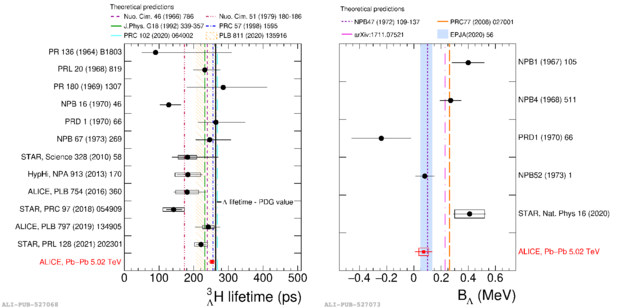
At the CERN Large Hadron Collider (LHC), nuclei and antinuclei are produced in many collisions. Sometimes, special unstable nuclei called hypernuclei are produced. Hypernuclei were first observed in cosmic rays in 1953 and are formed by a mix of protons, neutrons and hyperons. The only hypernucleus observed so far at the LHC is the hypertriton (3ΛH), composed of a Lambda baryon (Λ), a proton, and a neutron.
The most precise measurements to date of the lifetime and the Λ separation energy of 3ΛH (the energy required to separate the Λ from the rest of the 3ΛH) have been achieved by the ALICE Collaboration. These two quantities are fundamental to understanding the structure of this hypernucleus and, as a consequence, the nature of the strong interaction that keeps it bound. The study of this interaction is not only interesting per se, but it is also an input for modeling the dense core of neutron stars. Indeed, in the inner core of neutron stars, the creation of hyperons is energetically favoured compared to ordinary nucleonic matter. Therefore, detailed knowledge of the interactions among nucleons and hyperons is required to understand the inner structure of neutron stars.
The measurements obtained by the ALICE collaboration indicate that the interaction between the hyperon inside the 3ΛH and the other two nucleons is extremely shallow, such that the Λ separation energy is just a few tens of keV. This is also confirmed by the fact that the lifetime of the 3ΛH is compatible with the free Λ baryon lifetime, indicating that the interaction among the nucleons and the Λ baryons is feeble.
During the LHC Run 3, ALICE will extend its studies to heavier hypernuclei, putting tighter constraints on the interaction models among hyperons and nucleons.
home.cern news on "ALICE pins down hypermatter properties"
Further reading: https://arxiv.org/abs/2209.07360
